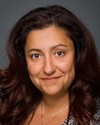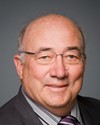It is a competitive system, which is by genre and language between the different broadcasters. We have four performance factor weights: historic access that we've talked about, audience success, regional licensing, and above average licensing. There's an incentive there for broadcasters to pay higher licence fees.
For the current factor weights in the English-language market, the highest factor weight is on audiences at 40%; above average licence fees is at 10%; regional licensing is at 20%; and historic access is at 30%. In the French market it's somewhat different, with historic access still the predominant factor at 45%, audiences at 30%, above average licensing at 15%, and regional licensing at 10%.
Each year broadcasters will submit total hours tuned submissions for programs that the CTF funded in the previous broadcast year as well as a number—and this is a bit more complex—that we call CTF-ables. They're programs that we did not fund, perhaps because the broadcaster managed to finance them without our participation, but that would have been eligible under our guidelines.
These submissions are analyzed by our staff. They are placed on a secure portion of our website for scrutiny by other broadcasters. These submissions form the basis of the calculation for the audience success. As well, the licence fees paid are factored in to calculate above average licence fees and regional licensing. You meld all of that together and, as we said before, it's a competitive system. Basically it's how broadcasters performed; their allocations will go up or down from one year to the next.
One thing that has been discussed at the hearing, as Valerie said, is that when we created the system we had to start with something, so we started with historic access, but that factor has been declining over the years. One of the suggestions in the CRTC report is that this factor now be eliminated and we focus much more on audience success and keep the regional licensing factor and the above average licensing factor, but that they be capped at 30%.
Our staff is actually in the process of simulating those results based on the last year that we have, and we'll be able to bring that forward sometime soon.




